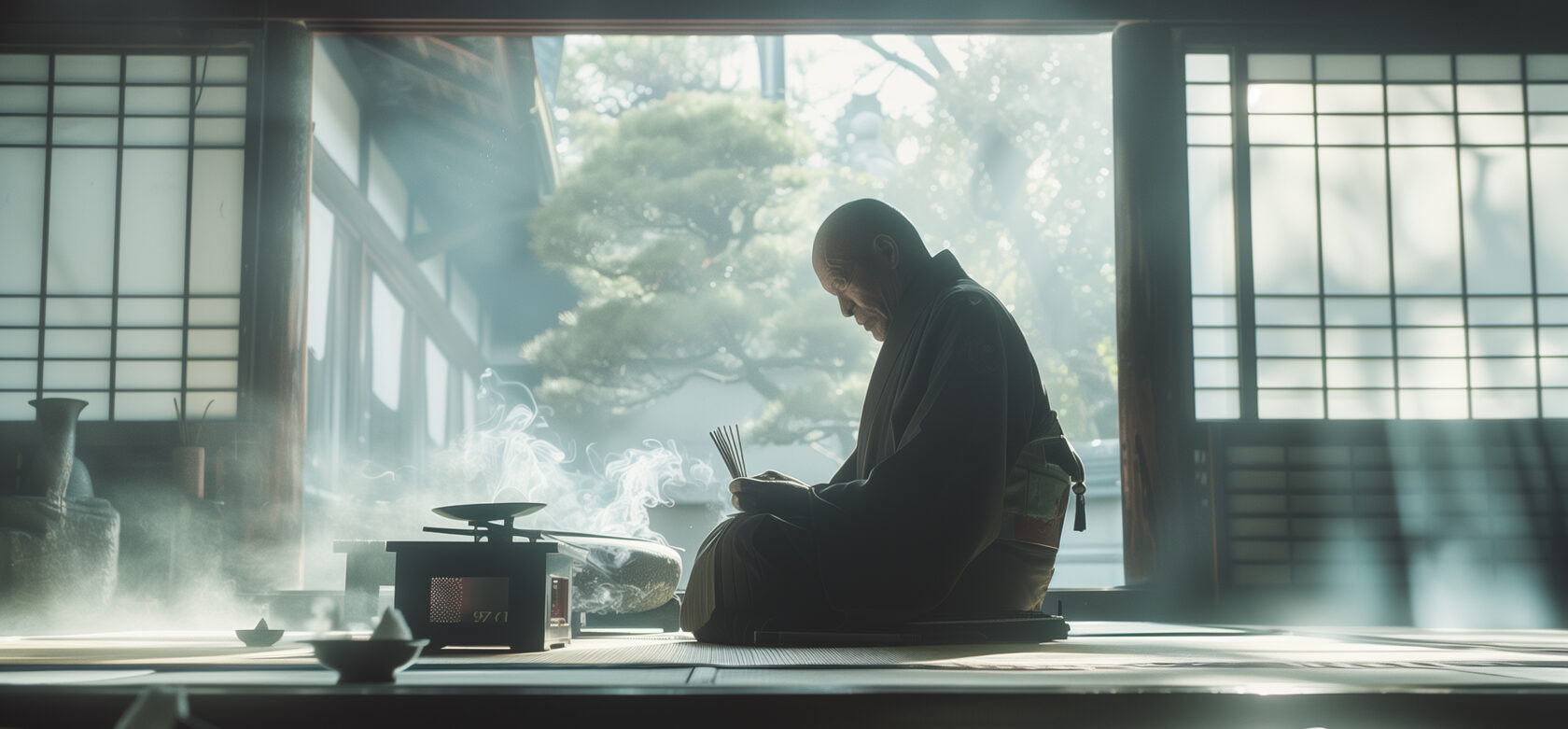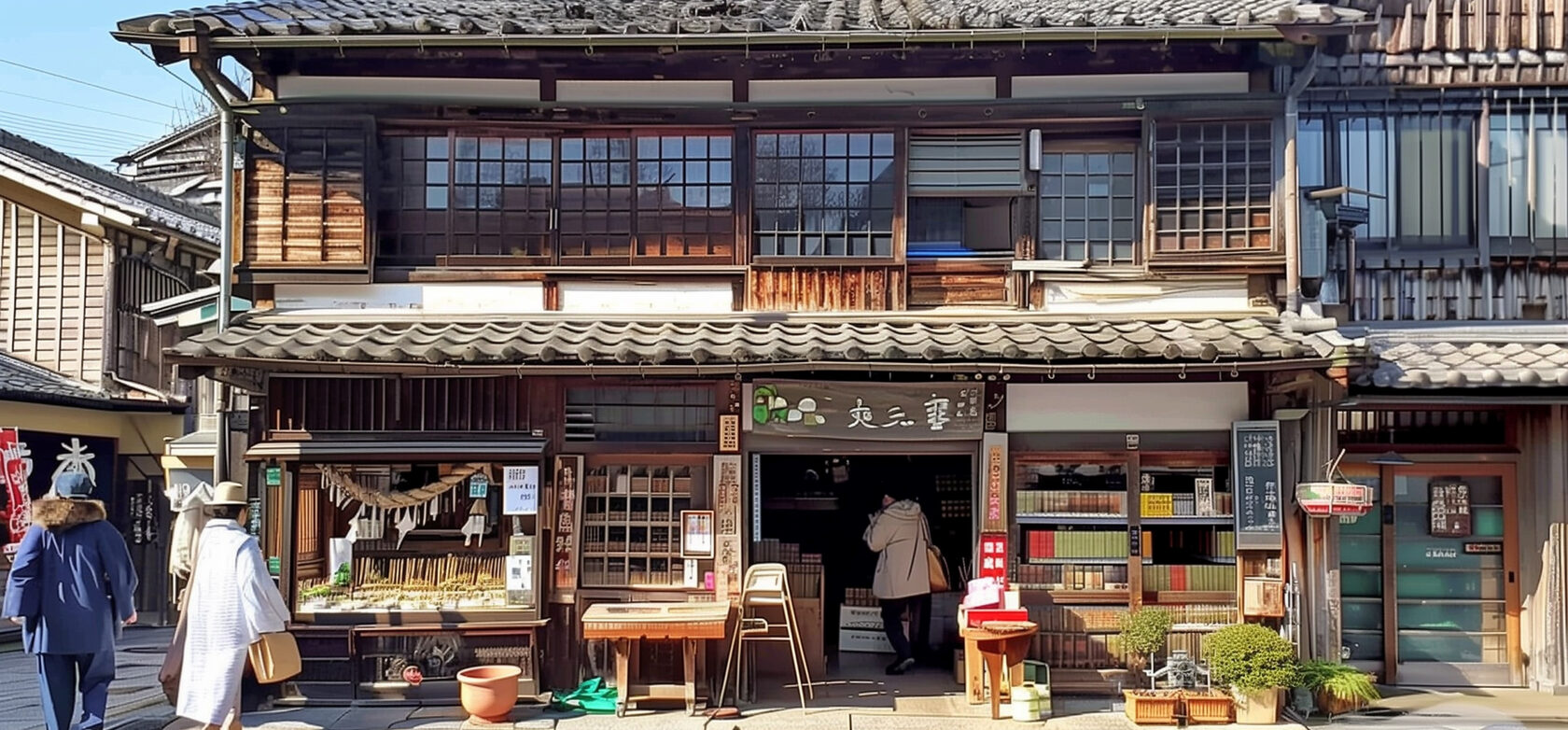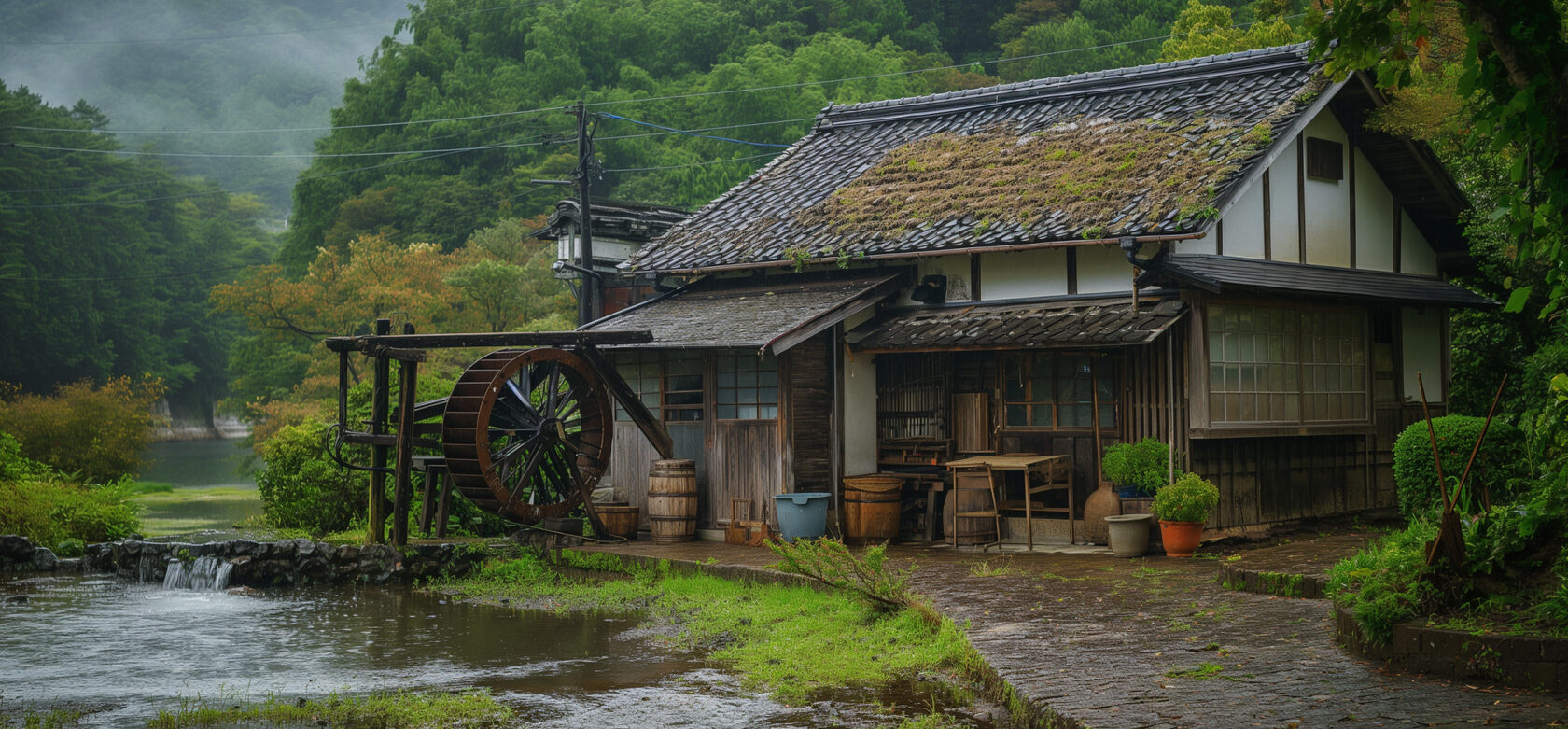

CHAPTER 1
TOKIO
Nippon Kodo is one of the top incense makers in Japan, and its story goes way back. Founded over 400 years ago, Nippon Kodo started by making incense for the imperial court and big Buddhist temples in Japan...
Nippon Kodo is one of the top incense makers in Japan, and its story goes way back. Founded over 400 years ago, Nippon Kodo started by making incense for the imperial court and big Buddhist temples in Japan.
The story of Nippon Kodo goes back to when Koju, an incense master, started making scents for the Kama Emperor. Over time, his family and students kept up and improved the art of making incense, leading to the start of Nippon Kodo.
Nippon Kodo keeps up the traditional ways of making incense passed down from the old days, using only top-quality natural ingredients. The company is known for its drive for innovation and coming up with new scents, mixing traditional methods with modern technology to meet the various tastes and preferences of its global customers.
Nippon Kodo plays a big part in making Japanese incense popular outside of Japan, presenting them as a piece of Japanese culture and spirituality. The company takes part in cultural events, shows, and festivals, showing the art of Kodo (the way of scent) and offering people a chance to touch traditional Japanese culture through incense.
The story of Nippon Kodo goes back to when Koju, an incense master, started making scents for the Kama Emperor. Over time, his family and students kept up and improved the art of making incense, leading to the start of Nippon Kodo.
Nippon Kodo keeps up the traditional ways of making incense passed down from the old days, using only top-quality natural ingredients. The company is known for its drive for innovation and coming up with new scents, mixing traditional methods with modern technology to meet the various tastes and preferences of its global customers.
Nippon Kodo plays a big part in making Japanese incense popular outside of Japan, presenting them as a piece of Japanese culture and spirituality. The company takes part in cultural events, shows, and festivals, showing the art of Kodo (the way of scent) and offering people a chance to touch traditional Japanese culture through incense.

CHAPTER 1
TOKIO
Ka-fun, which means "flower pollen" in Japanese, might be part of Nippon Kodo's wide range of products inspired by nature and its beauty. Nippon Kodo's products are known for using natural ingredients, deep respect for traditions, and constant innovation in creating scents. If Ka-fun is part of their product line, it highlights Nippon Kodo's commitment to creating scents that remind us of the natural beauty and can improve the quality of life and spiritual practices.
With ancient knowledge and modern technology, Nippon Kodo offers a wide range of incenses, each creating a unique atmosphere filled with deep meaning. Ka-fun, as assumed, combines these qualities, reflecting the company's rich heritage and mastery, and their ability to capture the essence of nature in every incense stick.
So, Nippon Kodo not only continues the centuries-old traditions of making incense but also contributes significantly to their development and spread, remaining true to the principles of quality, naturalness of ingredients, and deep respect for cultural traditions.
With ancient knowledge and modern technology, Nippon Kodo offers a wide range of incenses, each creating a unique atmosphere filled with deep meaning. Ka-fun, as assumed, combines these qualities, reflecting the company's rich heritage and mastery, and their ability to capture the essence of nature in every incense stick.
So, Nippon Kodo not only continues the centuries-old traditions of making incense but also contributes significantly to their development and spread, remaining true to the principles of quality, naturalness of ingredients, and deep respect for cultural traditions.



CHAPTER 2
OSAKO
A 79-year-old incense master from Sakai, Osaka, holds a unique place in the history of Japanese incense-making art. He's not just the last master in this field but also the last of his kind, continuing ancient traditions that haven’t been passed down to future generations. His hands are the only tools through which fragrances born from generation to generation since the 16th century, when Sakai embarked on the path of incense production thanks to trade with southern countries, come to life.
Genuine and Timeless Craftsmanship
A 79-year-old incense master from Sakai, Osaka, holds a unique place in the history of Japanese incense-making art. He's not just the last master in this field but also the last of his kind, continuing ancient traditions that haven’t been passed down to future generations. His hands are the only tools through which fragrances born from generation to generation since the 16th century, when Sakai embarked on the path of incense production thanks to trade with southern countries, come to life.
At the age of 27, the master embarked on his craftsman's journey under his father's guidance. For over 35 years, each incense stick leaving his workshop is not only a result of deep knowledge and skills but also of personal devotion to the art. The shop, founded in the Meiji era and located in Sakai's historical district, remains a place where tradition meets modernity.
A 79-year-old incense master from Sakai, Osaka, holds a unique place in the history of Japanese incense-making art. He's not just the last master in this field but also the last of his kind, continuing ancient traditions that haven’t been passed down to future generations. His hands are the only tools through which fragrances born from generation to generation since the 16th century, when Sakai embarked on the path of incense production thanks to trade with southern countries, come to life.
At the age of 27, the master embarked on his craftsman's journey under his father's guidance. For over 35 years, each incense stick leaving his workshop is not only a result of deep knowledge and skills but also of personal devotion to the art. The shop, founded in the Meiji era and located in Sakai's historical district, remains a place where tradition meets modernity.

CHAPTER 2
OSAKO
Despite global trends towards simplification and mass production, the master stubbornly continues to handcraft incense, preserving the uniqueness and depth of each scent. The absence of successors makes his work even more valuable and significant, as each stick he creates carries a piece of history and the master’s soul.
"Handcrafting" for the master is not just words but the foundational principle of his art. He continues to believe in the importance of every step of the incense-making process, from selecting ingredients to the moment the finished product fills the space with its unique fragrance.
Approaching the end of his journey, the master looks at his legacy with hope that his efforts and passion for the art of incense-making will be appreciated and remembered. His life and work in the workshop have become a living symbol of the unbreakable connection between past and present, between craftsmanship and the art of creating fragrances that can transport people to another dimension, filling their lives with harmony and peace.
"Handcrafting" for the master is not just words but the foundational principle of his art. He continues to believe in the importance of every step of the incense-making process, from selecting ingredients to the moment the finished product fills the space with its unique fragrance.
Approaching the end of his journey, the master looks at his legacy with hope that his efforts and passion for the art of incense-making will be appreciated and remembered. His life and work in the workshop have become a living symbol of the unbreakable connection between past and present, between craftsmanship and the art of creating fragrances that can transport people to another dimension, filling their lives with harmony and peace.


CHAPTER 3
FUKUOKA
A hundred-year-old watermill in Yame, Japan, stands as a symbol of perseverance and tradition. Founded in 1918 by villagers, this mill has supported many industries, from paper production to rice milling. But with the switch to imported materials and the introduction of electricity in the '70s, many mills closed down. Today, Baba's Water Mill is the last bastion of traditional cedar powder production in the region.
A hundred-year-old watermill in Yame, Japan, stands as a symbol of perseverance and tradition. Founded in 1918 by villagers, this mill has supported many industries, from paper production to rice milling. But with the switch to imported materials and the introduction of electricity in the '70s, many mills closed down. Today, Baba's Water Mill is the last bastion of traditional cedar powder production in the region.
Takeshi Baba, the mill's owner, inherited its management from his father and considers incense a part of his heart and soul. He and his wife, Chieko, hand-make cedar powder, preserving the true essence of scents. Despite the challenges of managing and maintaining the water mill, Baba believes if we use nature's forces, we must be responsible for their preservation.
Before his 60th birthday, Takeshi decided to rebuild the mill, hoping to keep it running for at least another ten years. It was a tough decision due to the high costs and lack of a successor. But thanks to the efforts of local carpenters, a new water wheel was installed in 2008, revitalizing the mill.
Takeshi Baba, the mill's owner, inherited its management from his father and considers incense a part of his heart and soul. He and his wife, Chieko, hand-make cedar powder, preserving the true essence of scents. Despite the challenges of managing and maintaining the water mill, Baba believes if we use nature's forces, we must be responsible for their preservation.
Before his 60th birthday, Takeshi decided to rebuild the mill, hoping to keep it running for at least another ten years. It was a tough decision due to the high costs and lack of a successor. But thanks to the efforts of local carpenters, a new water wheel was installed in 2008, revitalizing the mill.

CHAPTER 3
FUKUOKA
Today, Baba's Mill is not just a production facility but a labor of love, keeping the traditional way of making cedar powder alive. Each incense stick made by Takeshi and Chieko is a call to preserve traditions and Japanese culture. Baba insists on sustainable use of natural resources and providing high-quality, all-natural products.
Baba's Water Mill stands as the last stronghold of traditional cedar powder production. With their efforts and commitment to sustainability, Takeshi and Chieko aim not only to preserve the mill but also to share their legacy with the world, emphasizing the importance of caring for nature and traditions.
Baba's Water Mill stands as the last stronghold of traditional cedar powder production. With their efforts and commitment to sustainability, Takeshi and Chieko aim not only to preserve the mill but also to share their legacy with the world, emphasizing the importance of caring for nature and traditions.
Osako
A 79-year-old incense master from Sakai, Osaka, holds a unique place in the history of Japanese incense-making art.
CHAPTER 2
KARNATAKA
In the Karnatara region of India, there exists a small family business that has been passed down through generations for over 140 years.
CHAPTER 1
FUKUOKA
Baba's Water Mill is the last bastion of traditional cedar powder production in the region.
CHAPTER 3









